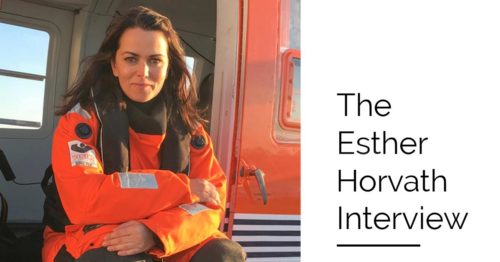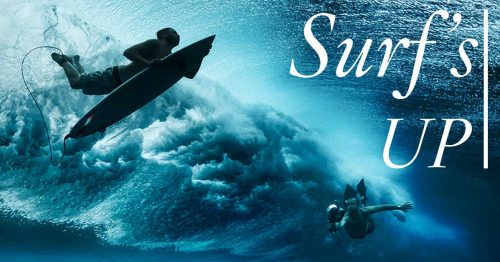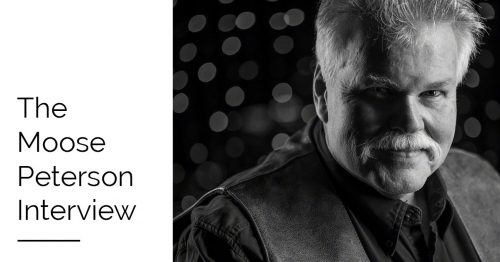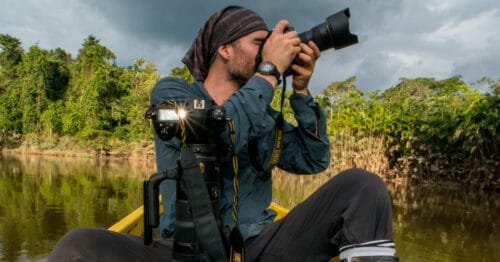Late last year, I sat down for a chat with photographer Wayne Simpson. Based in Elora, Ontario, Wayne creates some of the most evocative portraits I have seen, and has managed to develop his own creative style that invites the viewer to spend time to explore his characters.
After starting his photography career ‘by accident’, Simpson is now a highly recognized Sigma Artisan, and valuable contributor to the Offbeat photography community. I know I got a lot out of our wide-ranging chat, and I hope you do too.
MJ: For folks who perhaps haven’t heard of Wayne Simpson or your photography, can you tell us just a little bit about your journey behind the lens?
WS: I started out mainly shooting just landscapes and it was kind of something I did just for fun. I didn’t know what I was doing at the time I was just exploring and loving photography.
I ended up getting a job as a graphic designer for an oil and gas company, and they needed someone who had an interest in photography is how they put it. What I didn’t realize was they would hand me a camera and put me in front of the CEO of the company – and it was my job to take pictures of all the important things he did.
So, needless to say, I learned really quickly under lots of pressure, and eventually their equipment wasn’t enough to produce the quality of images I was after, so I bought my own gear to show them what was possible. Eventually it grew and my my job became instead of 90% graphic design 10% photography it was basically flipped by time I left.
The whole time while doing that I was gradually shooting weddings and portraits and things on my own time. I eventually just got sick of not having any creative freedom or control at all, so I started my own business.
MJ: Wow that’s amazing. So you got your start in photography almost by accident then, it seems?
WS: It was 100% by accident.
The only thing I’d done before in my graphic design schooling was use a digital point and shoot a little bit, just to get images to do my school projects. Other than that, I really didn’t know what it was doing.
So there I was, you know, in press conferences and on a private jet with the CEO and all this stuff, and I had no idea what I was doing. And I had to learn quick.
MJ: That’s some serious pressure. Having a full time job with a camera would be a dream for many photographers, but what were the challenges that you faced when working for the oil and gas company that had you looking to start your own business?
WS: When I first started out, I could take pictures of nature and have all the freedom I wanted. Eventually, working for the company, that creativity wasn’t really welcomed in the corporate world. I was doing the golden handshakes, the check presentations, podium shots and stuff like that. They only wanted the pictures that they were looking for.
So that’s where I decided to start my own business, doing more wedding and portraits. In the beginning, they were a lot different than what I do now. I was still afraid of people, and transitioning from shooting mostly landscapes, so little tiny people started appearing in my landscape images and I called those ‘portraits’.
Gradually I got more and more comfortable to the point now where I’m not afraid to be right in someone’s face.
MJ: And that growth process fuelled your creativity?
WS: So the same as in the beginning, I eventually found that I didn’t feel like I was being as creative as I wanted. That kind of happened again, once I really got into weddings and portraits as a business.
I just wanted more. I wanted to photograph the people that really interest me. So I tried to figure out how I could manage to do that. As I kept at it, I could see people were liking what I was doing when I started on this new path with portraits.
And so I, I figured, you know, if I could keep shooting the stuff that people liked, and they want to learn how to do it that… then I could start teaching them and and kind of take that road.
MJ: So you’ve ultimately built that education and workshop aspect as a core part of your business?
WS: Yeah, so instead of where I used to have to line up all kinds of jobs or gigs, it kind of turned into more that I would just photograph the people I wanted to and then the money making part was more from workshops.
MJ: It sounds like “be careful of doing what you love, because then it will become a job”?
WS: Yes, so true. When I had started the business, I was actually in Calgary. And once we moved back here (to Elora, Ontario), I lost a lot of contacts. I found that it was so hard to start from ground zero again, that I actually almost went back to graphic design at that point.
But then I kind of started thinking more and looking up photographers that were there doing the kind of things I wanted to do. And I saw a kind of a common thread in workshops. Yeah, some of my peers do their paid gigs, but they’ve kind of toned that down a bit in order to do workshops, which allows them to shoot more of what they want.
MJ: Many of your images have a “Wayne Simpson” look to them that stands out immediately. Did you have your style your voice right from day one, or is that something that was a little bit of a journey to develop?
WS: Yeah it was interesting how that happened. There’s a friend of mine, Dave Brosha. One day, I don’t know how many years ago now. He was really pushing me and encouraging me to do personal work that wasn’t paid in order to give myself permission to just play. And it was literally the first shoot I did, where I gave myself permission to just go with it and play with light… that one portrait session changed everything. And I knew it as soon as I looked at the image on my camera. I just kind of haven’t looked back since.
MJ: Is there anything that really clicked with like the the technology or the tools you were just ‘playing with’ to help create that look?
WS: In the beginning, when I started experimenting with lighting, I would basically use any light just for the sake of using a light. Just basically throw light at the people and it sort of looked a little better. So I went with it. But on that, one particular shoot, where I was able to slow down and think about things and I’d actually looked at some other photographers work and kind of gained some inspiration. And there was something I wanted to try. So once I realized how much you could ‘stretch’ light – like really use extreme angles of light to get a lot more drama – that’s when I started exploring multiple light setups too.
But I think the biggest thing has been really learning how to see light and use what’s already there to my advantage. I actually tend to keep things I would say, much simpler than a lot of other photographers that are using lighting on location. I try to use whatever directional light is there kind of as another light source, so in most cases, it’s one or two lights, rarely more than that.
MJ: As a viewer or somebody who simply appreciates your images, it seems that a lot of your subjects have old spirits, Whether they’re physically older or not, there seems to be a lot of wisdom there. How do you describe your look or your style you’ve developed?
WS: That’s a good question actually. In the beginning, if I would see somebody that for whatever reason turned my head, you know, or made me do a double take, I was just drawn to those people. And now it’s, it’s sort of evolved a little bit. For example, I’m working on a book right now, which has kind of forced me to go and look for people rather than them organically coming to me.
And so what I find now, which I didn’t realize before, is I’m especially drawn to people’s stories. I feel that I can, you know, see these stories in people. I don’t really know how else to describe it… but it wasn’t on purpose.
MJ: It seems that there’s a lot going on under the surface of your subjects.
WS: I really don’t have many people smiling, and that probably adds to that feeling because we’re all used to seeing people smiling in pictures. In some weird way I think I’m also drawn to people that have stories that are perhaps a little bit tragic. And I feel like no matter what age where we have all kinds of lessons to learn from people around us.
I had photographed and interviewed a man locally here who lost both legs in an accident when he was nine years old. And he’s gone on to be a three-time gold medal-winning Paralympic basketball player. He’s also a really great musician with a couple of albums out now.
I get a lot of perspective from stories like that.
MJ: You mentioned Dave Brosha twisting your arm to spend the time to play and explore your voice. Is there anyone else that’s helped or inspired you to develop this distinctive style?
WS: Joe McNally. I really gained a lot of inspiration from his environmental portraiture and his lighting.
Joey Lawrence. His style of lighting and his tone and everything. And his subject matter actually. I’m really drawn to how real his portraits are. Actually another one that’s kind of less heard of is Drew Gardner, and then I’d also add Joel Grimes to that list.
In the beginning, you try to imitate what the people you look up to are doing. And then ultimately the reason I landed on my style was basically because I failed to create what these people were doing. I tried and tried to reverse engineer how they did things.
Then somewhere along the line, I realized that I kind of like what I’m coming up with, and I’m just going to stick with it. So it was basically by accident. I think we all need to just let go of that notion that we’re going to be the same as someone else, and just welcome the fact that our own voice will come to us along the way.
MJ: It’s got to be liberating or empowering to find your voice and be able to focus on shooting what you love to shoot. Is there a flip side as well to that? Are you then subject to your own rising and falling inspiration?
WS: Yeah, for sure. That can be a big challenge but really, when it comes down to it, I find the people themselves are the inspiration… every time I meet someone I get excited all over again to photograph.
But, to be honest, it’s it’s an ongoing challenge. And I think it’s, I would say the one thing that I struggle with the most is making the time to do what I love to do. The fact that I am working on a book has been very helpful and kind of given me the push and permission to go and do these shoots.
My daughters are three and almost seven. And you hear so many people say they wish they spent more time with their kids… and here I am in this position – where my wife is our primary breadwinner – where I can spend time with them.
Yet I find myself also getting really anxious that I haven’t been shooting and all I can think about is that sometimes. So it’s an ongoing struggle pretty much every day.
I’m basically just trying to keep things moving forward and progressing so that when the time comes that I can spend more time doing this, and haven’t backtracked at all. I feel like I could do so much more.
MJ: I know you’re a contributor and well-connected to the Offbeat photo community. What role do those relationships play in your business or supporting your creativity?
WS: They definitely help. The biggest thing that relationship with Offbeat founders Dave Brosha and Paul Zizka has brought to my life is a different outlook. One where, you know, we’re not all competitors. Since meeting those guys, I’ve really changed my mentality to try and support fellow photographers.
I had a student ask me if I could do an interview for their school project. It really struck me when he said that he had reached out to ten other photographers and I was the only one that actually got back to him. And I found that really disgusting.
I think that we should all be ready to lend a hand to the people that are that are coming up as new photographers. Because I know when I was in that position, I had a couple of key people that I was able to reach out to, and they had no problem helping me. And I can’t imagine not having that.
MJ: That’s great. You mentioned a book you’re working on. Can you tell us a bit more about that?
WS: For sure. I’m about two thirds of the way through now. It’s a collection of portraits, but the goal is to include as many really interesting stories that are examples of resilience. So the book will be called ‘Resilient’ unless something changes. My goal is to just showcase a lot of a lot of really amazing or just interesting or relatable stories of people that display a certain amount of resilience. I hope hat people will see pieces of themselves in the stories.
MJ: Very cool. Can’t wait to check that out when it’s done. My final question for you might be a bit cheesy, but if you had a time machine and could go back, is there anything you would do differently about your journey?
WS: Good question. I think I would probably tell myself to pay more attention to people. I think I even say this in the ‘Legacy’ video that Sigma put out (above). It’s that idea that we walk by people every day that we don’t even think twice about what’s behind that person.
People always ask me ‘where do you find these people?’ And the truth is – and I challenge you to try this – if you start paying attention. You *actually* start paying attention and really looking, you’ll see these people everywhere. It’s just that we’ve all grown up, just sort of, you know, like ignoring the different person in the corner. And I think we have much to learn from them.
MJ: An excellent challenge, and a great conversation… thank so much you, Wayne.
WS: My pleasure, thank you.
[Note: The above interview has been edited for clarity and length.]




















Mark: I appreciated your interview of Wayne Simpson. His work was worth talking about and in showing his images.
Russ Salamon
Instagram: salamonphotoworks
Great interview. Loved the video background. Fantastic work!